Choosing the Perfect Boat for Nature Photography
Photographing nature in Southern Louisiana often means shooting from a boat. Previously, I discussed techniques for shooting in a boat. For this post, I'm talking about what type of boat to use in the swamp.
Aluminum Hulled Boat Used on my Photo Tours
Photographing nature in Southern Louisiana often means shooting from a boat. Previously, I discussed techniques for shooting in a boat. For this post, I'm talking about what type of boat to use in the swamp. Considerations include;
- The ability to get into areas with shallow water
- How quiet the boat is, mainly when photographing wildlife
- What your point of view is, you want to be low for some subjects, high for others
- The stability of the boat you don't want to fall in
- Your ability to Photograph without the boat or anyone in the boat obscuring the view
- You want to be able to transport the boat to the shooting location easily
- The ability to operate the boat while you also photograph with the camera?
- Cost
I include the following types of boats in this post:
- Skiffs
- Mud Boats
- Airboats
- Canoes
- Kayaks
- Perogues
Motor Powered Boats
Skiffs
I've been working with the folks at The Atchafalaya Experience since 2003. They use aluminum-hulled boats with outboard motors and a center console for steering and control. These boats get us into fairly tight places with several feet of water. They sit moderately low on the water so you can get a relatively low point of view, often ideal for landscapes and suitable for birds wading in the water. They are rugged and extremely safe. They are stable enough for you to stand so you can achieve a higher point of view for birds perched in trees or nesting on a treetop. They are relatively quiet, allowing reasonably close access to birds without stressing them. They can quickly cover a large area allowing you to shoot at multiple locations.
Ideal when multiple photographers are photographing and with people with limited experience operating a smaller boat that requires paddling.
Downsides include obscured vision with multiple people in the boat, vibration from the motor, difficulty transporting and launching the boat, and cases where you want to have a point of view at water level. This type of boat is best when the captain is not photographing.
Mud Boats
Gator Tail Mud Boat on the way to Cow Island Lake
Mud boats are similar to skiffs, except that they have an outboard air-cooled engine allowing them to traverse areas of little or no water. As the best swampy areas to photograph are in shallow waters, this can prove a significant advantage. My friends at Atchafalaya Experience used this type of boat for several years. However, they proved to be unreliable, and for wildlife photography, their propensity to backfire when restarting the engine proved to be problematic. These boats are as stable as the skiffs with the same issues with transporting and launching. As with the skiff, you need a dedicated captain, who is not photographing.
Airboats
A flat bottomed boat fitted with a large automotive engine and an aircraft propeller. It does not require water and can go over swampy areas. Very noisy and vibration prone. Hearing protection usually needed when in use. Wildlife doesn't tolerate the noise, and the vibrations make photography very difficult. The point of view is high, and there is little ability to move about in the boat when in use. The only practical function is to drop off photographers in remote locations not reachable in any other way. A skilled, dedicated captain is required.
Human Powered Boats
Perogues
The Perogue is the classic cajun boat used for fishing and trapping in the swamp. Originally a dugout made from a cypress tree, the most common form of it is now handmade from 1/4 inch marine or exterior plywood. Classically the boat is push polled with the person standing in the Perogue, but many people sit and paddle with a single-headed paddle. Flat bottomed, it has a very shallow draft and can operate in very shallow water. It is typically less stable than a canoe, but more stable than a Kayak. I've never photographed from a Perogue; however, many years ago, my wife and I paddled in Bayou Dularge south of Houma in one built by her Grandfather. Unfortunately, it had developed a leak, and the two of us slowly sank. I think of this when I consider photographing from one. A Perogue may be a good option for swamp photography. Perogues are inexpensive if you're able to construct it yourself, stable, quiet in the water, reasonably simple to transport, and low in the water. Like all human-powered boats, you're not able to move from one area to the next rapidly, so you need to pick your location carefully. Also, being small, you're limited to shallow protected waters; you don't want to be out in rough weather.
Kayaks
Kayaks are the modern replacement for the Perogue. Lighter and available at low cost, they don't require construction. They ride lower in the water than the Perogue so they may offer a better point of view. I haven't photographed from one, but know many who have. They represent an easy, inexpensive way to get on the water. Again, you need to pick your location, you can't quickly paddle across and a large body of water. They are quiet, easy to transport, and you can launch nearly anywhere. Typically they are paddled with a double-headed paddle, but foot-powered kayaks are available, which would leave your hands free to photograph, and you are less likely to splash water on the equipment.
Canoes
A Canoe may also be an excellent way to photograph on the water. Heavier than either the Perogue or the Kayak, they are more stable, but they are harder to transport or launch. Like the Perogue and Kayak, they are quiet and have a shallow draft. Typically they are paddled with a single-headed paddle, a disadvantage over the Kayak as it is more likely to splash water on equipment. Like the other human-powered boats, moving quickly to another location is not possible.
I've relied on motor-powered boats for the 19 years I've been doing photography in Louisiana. Over the next year, I hope to explore one or more of the human-powered alternatives to allow me to get out more on the water.
Photographing Stunning Louisiana Landscapes in the Fog
Southern Louisiana’s foggy mornings create stunning photographic opportunities, from mist-covered cypress trees to ethereal landscapes where the fog glows in the morning light. Learn how to capture breathtaking fog photography with exposure, composition, and lens selection techniques.
Southern Louisiana is blessed with many foggy mornings, creating a dreamlike atmosphere that is perfect for photography. I particularly love capturing foggy cypress scenes over the water, where the mist isolates the trees against a stark white backdrop. Even more dramatic are mornings when low-lying fog catches the light, making it appear as though the mist is on fire.
Louisiana and Fog
Due to the humid conditions, Fog is not unusual in Southern Louisiana. Fog forms when the air temperature falls below the dew point. Over the water, in the Atchafalaya Basin, it is not unusual to have very dense fog that covers all. Less frequently, the fog forms in a thin layer over the water. Both situations lend themselves to stunning photographs.
Key Characteristics of Fog Photography
When photographing foggy landscapes, you’ll notice a few distinct characteristics:
Soft, diffused light – Fog eliminates harsh shadows and softens the entire scene.
Low contrast – The mist mutes colors and details, creating a dreamy effect.
Atmospheric perspective – Objects become blurrier and less distinct with distance.
Glowing effect – Shooting into a light source, such as the rising sun, makes the fog appear luminous.
Brighter-than-expected exposures – Camera meters often underexpose foggy scenes, so manual adjustments may be needed.
Techniques
Choose your position in the scene prior to picking a focal length, judge the degree of blur desired, and then choose the lens focal length to create the composition.
Focus the lens on Close Objects rather than distant ones. The image appears sharper closest to the photographer, A sharp foreground with a blurred background will look natural.
Largely ignore the depth of field as distant objects will appear blurred in fog anyway. A moderate Telephoto Lens is often a good choice in dense fog even with its shallow depth of field.
Assume the scene is white, often requiring 2 stops of light beyond mid-tone. In an automated mode such as Aperture Priority, try 1.7 to 2.0 stops of positive compensation. Check your histogram after shooting and adjust to the conditions. I shoot in manual and watch the histogram to achieve the proper exposure.
With Low-lying fog, look for opportunities to shoot into the sun and achieve a fiery appearance.
Lake Martin - Status of a Favorite Photo Location
An update on photography at Lake Martin. While the birds are not yet back near the road and many of the price landscape locations are now blocked, Lake Martin is still worth a visit if you're in the area.
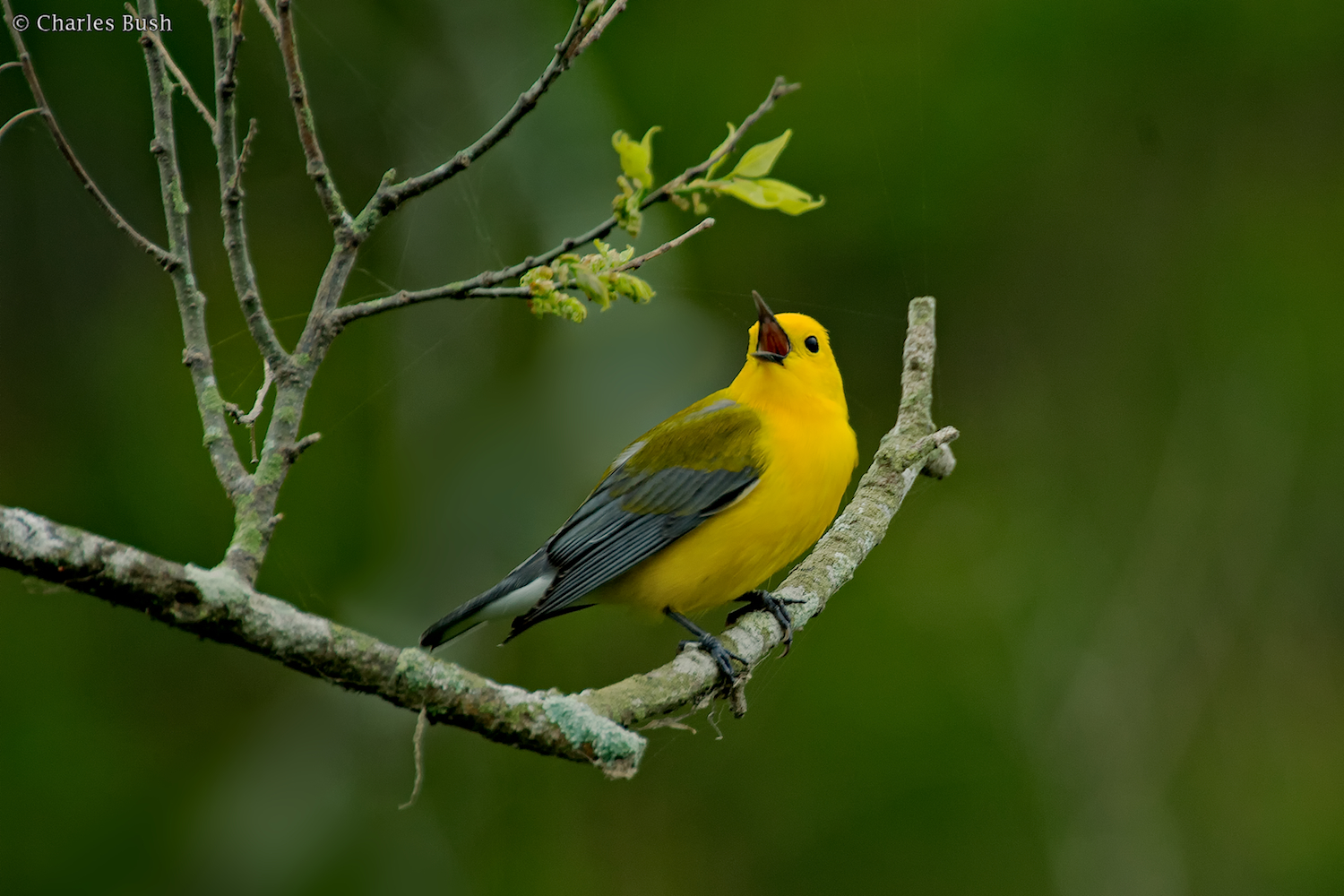
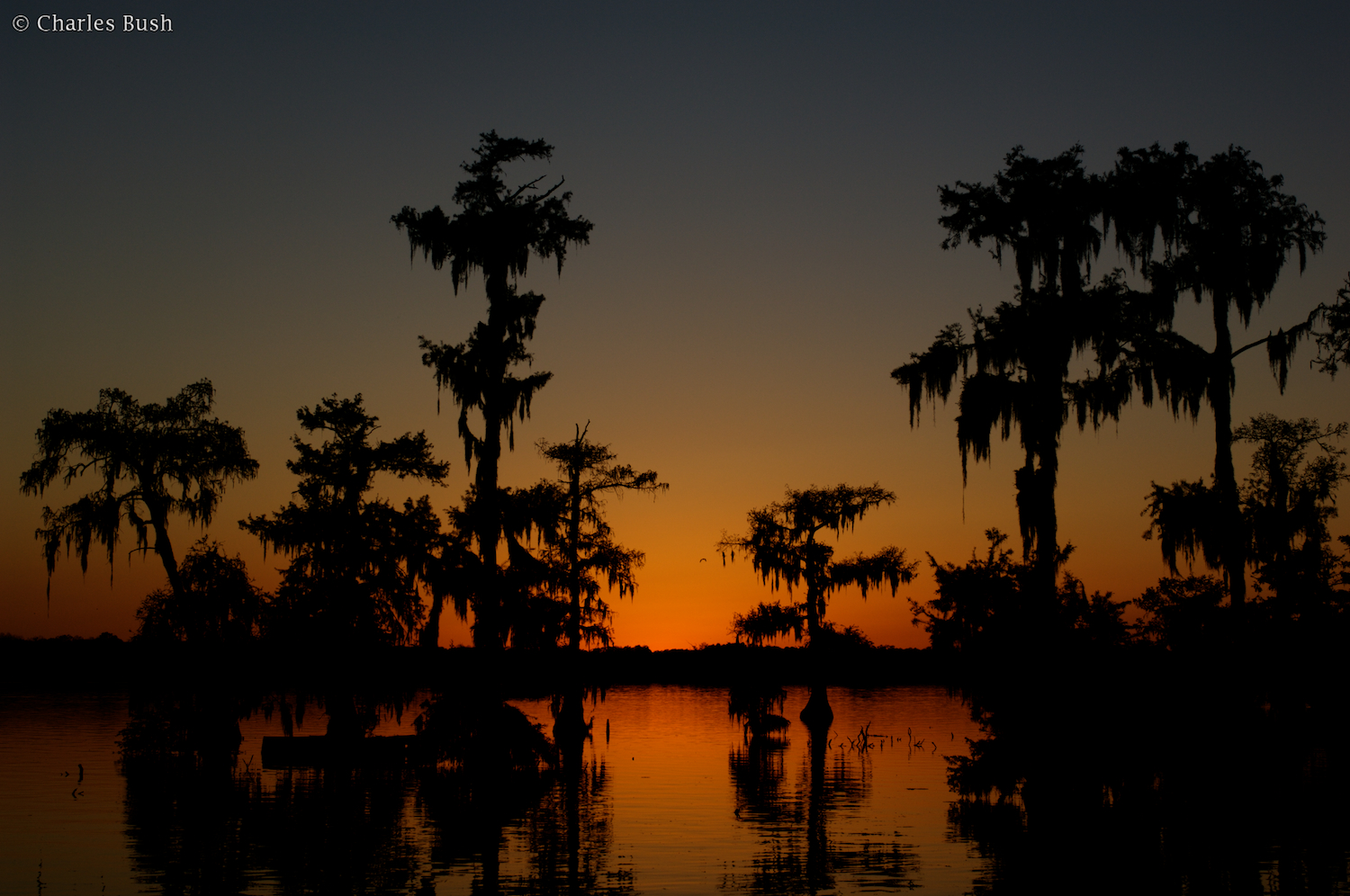
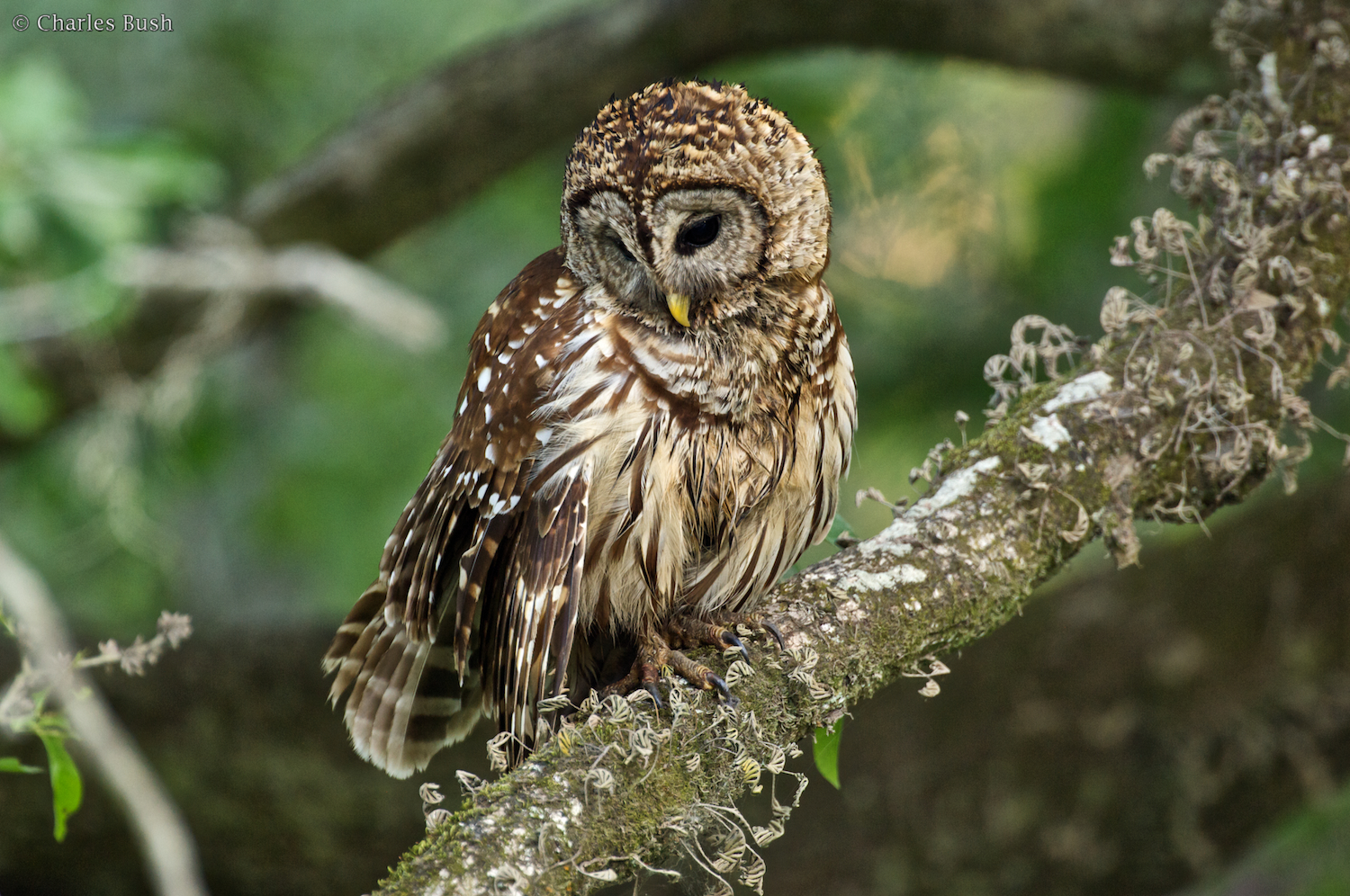
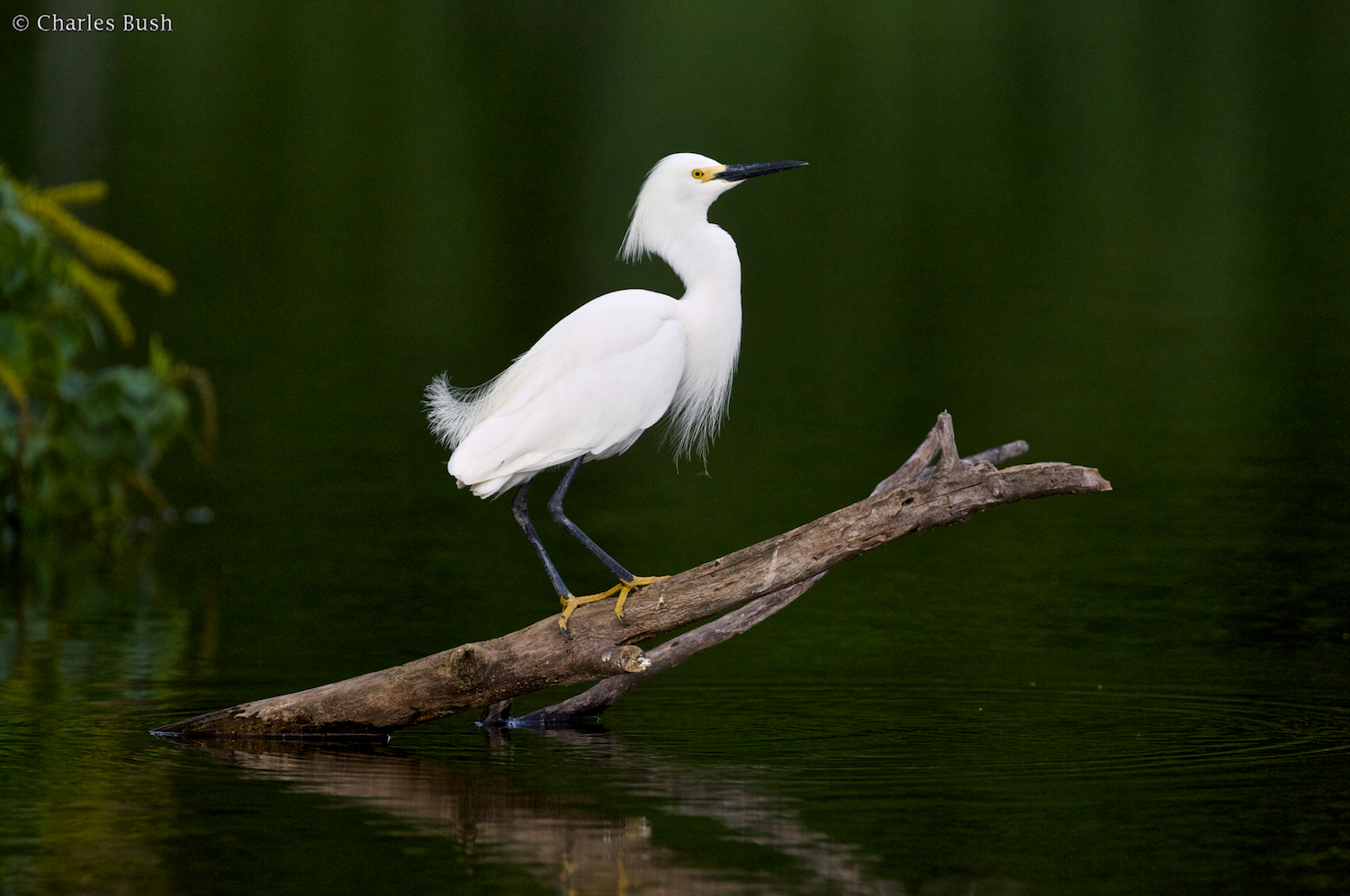
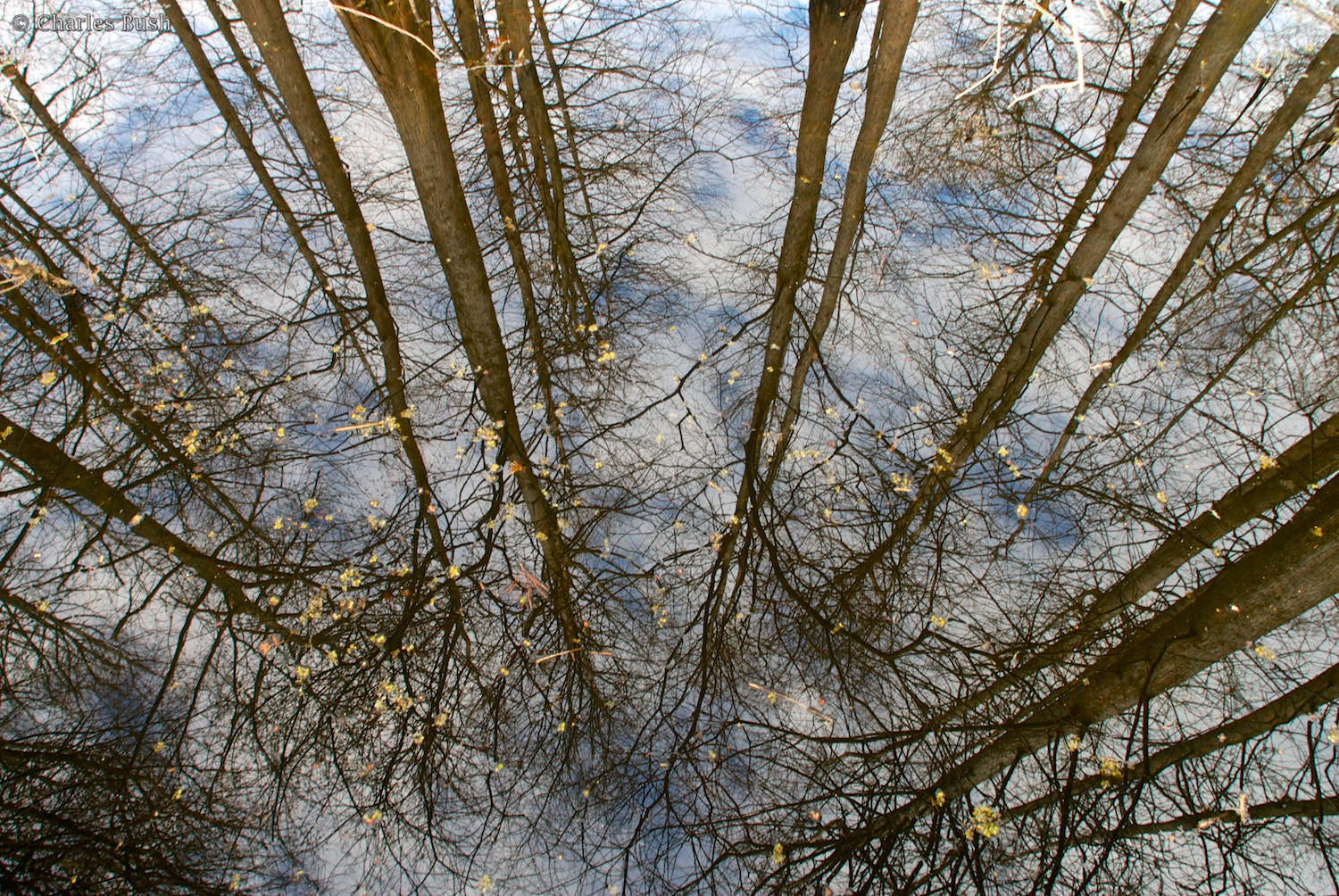
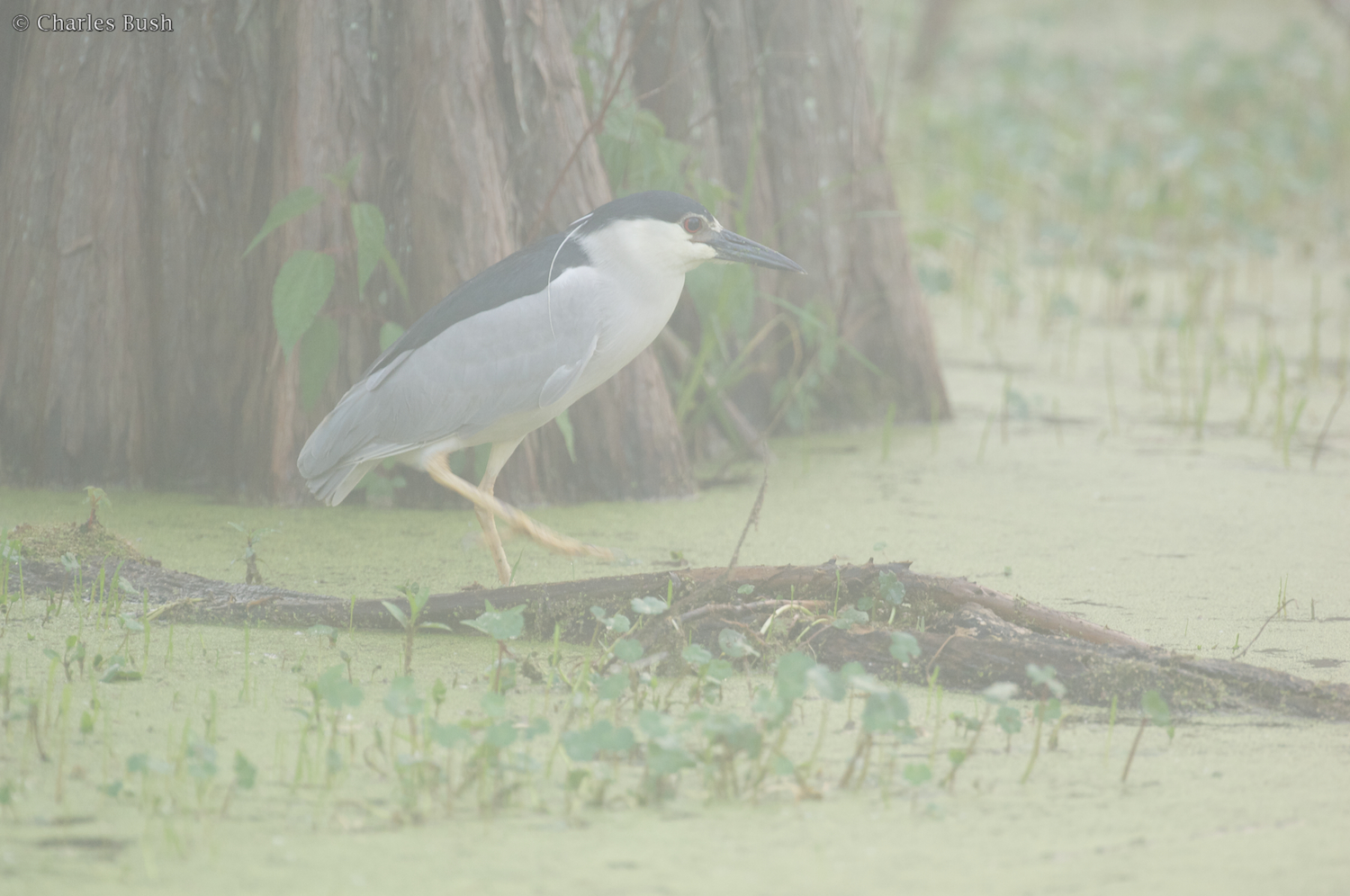

History
When I first moved back to Louisiana in 2001 I discovered the amazing Rookery at Lake Martin. There were literally thousands of nesting wading birds, including resplendent Roseate Spoonbills nesting within easy photo access of the road. from the Spring of 2002 through March of 2006, I spent hundreds of hours photographing the amazing scenes unfolding before my eyes. This was truly a world class place to photograph wading birds, particularly the Roseate Spoonbill.
That all abruptly ended in Late March of 2006. On the morning of March 26th, I received an email telling me that the majority of the birds had left. Having been there on the morning of the 24th and witnessing what appeared to be a better than typical nesting season, this came as a real shock. While it can't be proven, I believe that this was a man made tragedy.
In the last 7 years, many of the nesting birds have returned. Unfortunately none are are nesting within easy photo range. While in the early spring there are good opportunities to photograph the birds in flight retrieving sticks for their nest, the best opportunities are birds within the lake feeding and landscapes.
Current Photo Opportunities
Lake Martin is one of the best places to photograph owls. Barred owls are frequently seen along the road and from the new board walk early in the morning. Several times I have spent at least an hour following an owl from tree to tree as it caught crawfish from the water and returned to the tree to eat.
Lake Martin is also a good place to photograph smaller birds in the spring, such as the Prothonotary Warbler. While I haven't gotten any good shots of them, I've also seen Painted Buntings in Mid to Late April.
The lake is also a very good place to photograph irises. Mid April finds Irises in bloom along the edge of the lake and with some work you can make outstanding photographs.
Finally Lake Martin is a great place to photograph Cypress in the water. Although some of the best sites have been blocked by recent construction along the Lakes edge, good shots can be obtained along the road early in the morning One of the best spots in the state to capture sunsets is on the small peninsula along the boat launch.
Summary
While the loss of photographic access to nesting wading birds and to some of the better landscape locations due to construction, Lake Martin still offers significant opportunities to the nature photographer. A day at Lake Martin can provide great shots of native Louisiana wildlife and landscapes.
Update Late 2015
Unfortunately, 2015 saw a significant decline in wading birds over 2014. My hopes for a return of a great place to photograph nesting wading birds seems to be unwarrented and I'm focusing elsewhere. I've also not been able to photograph owls over the past several years and many of the best places to photograph landscapes have been obscured by development and no trespassing areas. Unfortunately I have also witnessed people removing many of the natural wild irises on the northern side of the lake, of course nearest the road where it's easiest to photograph. While still a good place to photograph natural Louisiana, it is no longer a great place.









